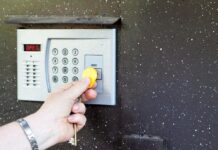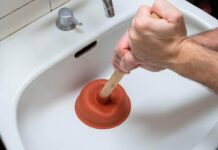Tenants pay their landlords a tenancy deposit as they are about to begin their tenancy. It is handed over to the landlord a few days before the tenancy starts or on the day of the tenancy agreement signing. This payment is intended to protect the property and the landlord, and ensure the tenant sticks to their obligations as laid out in the agreement.

Additionally, landlords can use the deposit to cover for repair costs if their tenants damaged some parts of the property or if there are rent arrears. The amount can be a portion deduction or the entire amount – it all depends on the damages or arrears. However, if there are no issues, tenants can get back their deposit in full at the end of their tenancy.
Tenancy deposits are typically equivalent to five weeks’ worth of rent.
Landlords’ responsibilities
Aside from returning the deposit 10 days after the end of the tenancy, landlords are also obligated to protect their tenant’s money. Within 30 days after the deposit was given to them, landlords are expected to register the money into one of the three government-approved deposit protection schemes: mydeposits, Tenancy Deposit Scheme, and Deposit Protection Service.
However, deposit protection is only intended for tenants within the private rented sector on an assured shorthold tenancies. In some cases, the landlord can hold the deposit and does not have to get it protected by any of the schemes.
Some private landlords of assured shorthold tenants do not protect deposits in the same way that some of them do not return deposits.
What you should do to get back your deposit
At the start of your tenancy
Ensuring you get back your deposit starts when you are about to sign our tenancy agreement and begin your tenancy. It should be your responsibility to understand what your responsibilities are and what your landlord’s obligations are.
You and your landlord should talk about the important aspects of your tenancy, starting with the tenancy deposit. Ask all the questions you can think of as this will help you understand what’s going to happen. What are you paying for? Where’s your deposit going to go? Which scheme will it be protected in? Will you get it back?
Before moving on with your tenancy, your landlord should show you proof that they have accepted your deposit. Ensuring this will save you some confusion, misunderstanding, or landlord-tenant disputes along the way. With this proof, your landlord will not be able to deny getting your deposit.
When you move in
The first thing you need to do when you move in is to carry out a check-in inventory of everything in the property, including the condition of the items when your tenancy started. One of the terms in the landlord-tenant agreement is for you to ensure the property, its furniture, fixtures, and other items are kept in good condition throughout the tenancy.
Document your check-in so you’ll have evidence (i.e. photos and videos, among other things) in case your landlord holds back your deposit for damages and other similar issues.
At the end of your tenancy
If you are about to end or have just ended your tenancy but your landlord has not responded to your questions about your deposit, here are some things you can do:
Before leaving the property, take photos and videos of the property, including all the furniture and fixtures (including the walls and carpets), so you’ll have proof of what their condition was when you left. Don’t forget to have the checkout inventory signed by your landlord.
Your next step is to determine if your deposit is protected by any of the government-approved protection schemes. You can ask your landlord or letting agent directly or you can get in touch with any of the scheme providers. Each provider has their own set of requirements and procedures, so you will want to coordinate with them about the steps to get your deposit refund.
If your landlord follows the tenancy law, they should return your deposit within 10 days after the two of you have agreed on an amount for the refund. If they withhold a portion or all of your money, there should be a reason for them doing so, as mentioned earlier. Your deposit protection scheme provider can help you resolve the problem.
It also helps if you know which reasons your landlord can use to deduct from your deposit: rent arrears, damages, cleaning, gardening, unpaid rent, and redecoration. If it’s normal wear and tear that you’re worried about, don’t be; it cannot be charged to you.
If your landlord deducts money from your deposit without any valid reason, you have the right to challenge them using the evidence that you have. If they haven’t protected your deposit, you can also file a tenancy deposit protection compensation claim.
How do you file a claim?
Bringing your landlord to court for withholding your deposit can be challenging and time-consuming, but it will be easier if you work with a team of expert solicitors. Choosing solicitors who are experienced in tenancy deposits is the best way to go, particularly those who are regulated and authorised by The Solicitors Regulation Authority.
You’ll want to check out the team of experts at Tenancy Deposit Claims. They have been in the tenancy deposit industry for years and have helped thousands of tenants like you get back their hard-earned deposit money from their landlords.





































